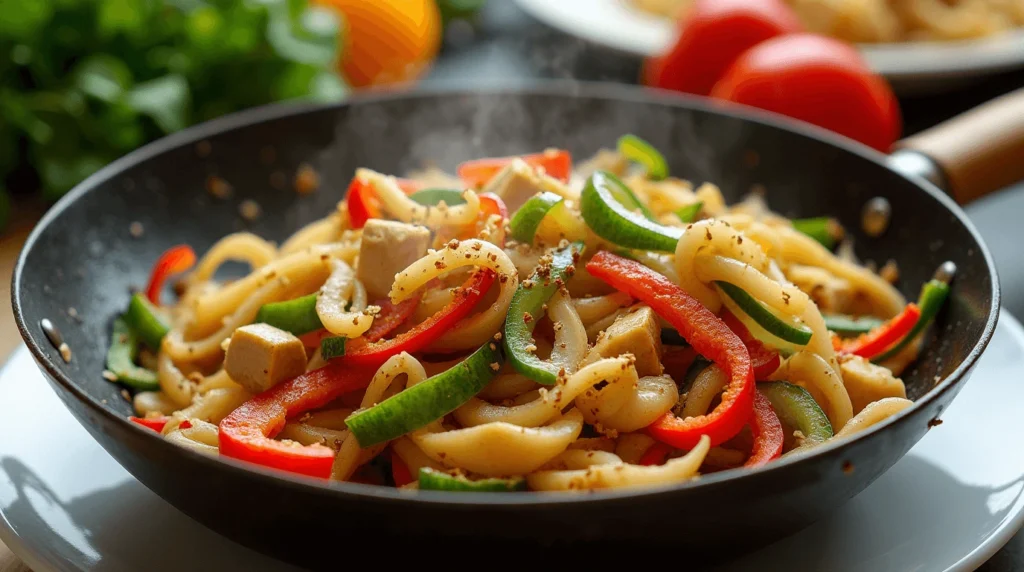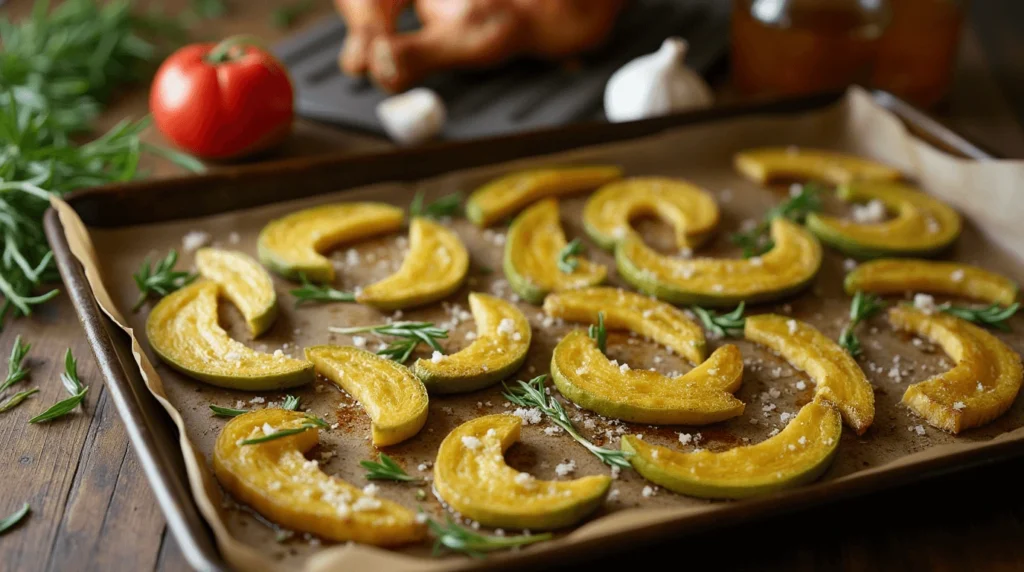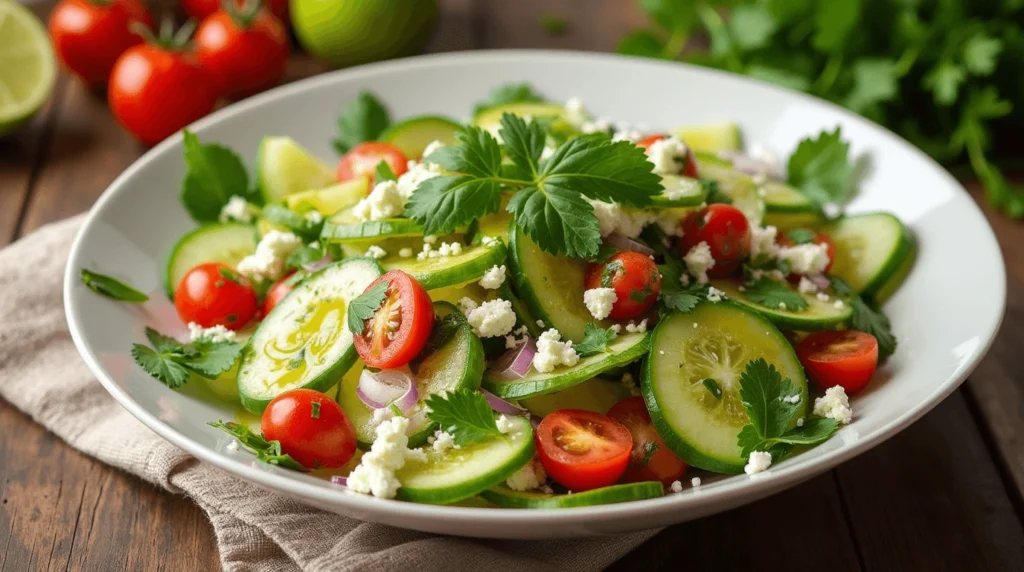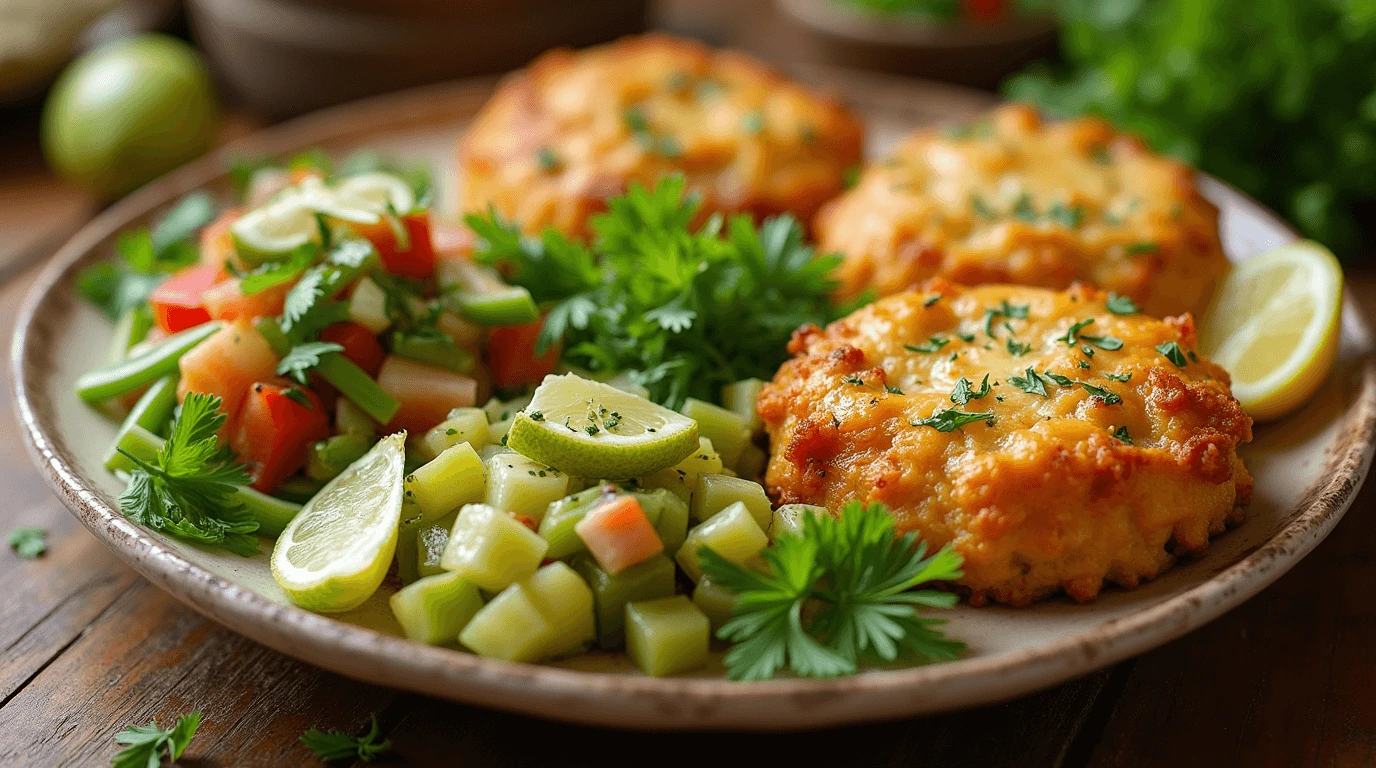Chayote is a versatile and nutrient-rich vegetable that deserves a spot in your kitchen. Originating from Mexican and Latin American cuisine, this green, pear-shaped squash is known for its mild flavor and crisp texture. Its subtle taste makes it an excellent addition to a variety of dishes, from savory stir-fries to sweet desserts. Whether you’re sautéing, roasting, or baking, chayote brings a unique twist to your recipes, adding both flavor and nutrition.
What Is Chayote? Understanding This Unique Squash
Chayote’s Origins and Cultural Significance
Chayote, also known as mirliton or vegetable pear, has deep roots in Mexican and Latin American cuisine. Indigenous to Central America, chayote has been a staple in traditional dishes for centuries. It’s often used in soups, stews, and salads, adding a crisp texture and mild taste. In Mexican cooking, chayote is frequently sautéed with garlic, onions, and spices, while in Caribbean cultures, it’s commonly stuffed or pickled for a tangy twist.
Chayote Nutrition and Health Benefits
Chayote is a powerhouse of nutrition, offering numerous health benefits. It’s rich in fiber, which aids digestion and promotes gut health. With its low calorie content, chayote is perfect for those seeking a weight-conscious diet. Additionally, it’s packed with antioxidants like vitamin C, which help reduce inflammation and support immune function. Chayote also provides essential minerals like potassium and magnesium, contributing to heart health and overall well-being.
How to Select and Store Chayote
When choosing chayote, look for firm, unblemished squash with vibrant green skin. Avoid chayote with wrinkles or dark spots, as these indicate aging or spoilage. For optimal freshness, store chayote in the refrigerator’s crisper drawer, where it can last up to three weeks. If you prefer longer storage, blanching and freezing sliced chayote is an excellent option. Keeping your chayote fresh ensures better taste and texture in your recipes.
Preparing Chayote for Cooking
How to Peel and Slice Chayote
Peeling and slicing chayote is simple with the right technique. Start by washing the chayote under running water to remove any dirt. Since chayote releases a sticky sap that can irritate the skin, wearing gloves is recommended. Use a vegetable peeler to remove the outer skin, then slice the chayote in half. Remove the central seed (which is edible but often discarded) and cut the flesh into desired shapes, such as cubes, strips, or thin slices for your recipe.
Cooking Methods for Chayote
Chayote’s mild flavor makes it adaptable to various cooking methods. For a crisp texture, sauté chayote in olive oil with garlic and onions. Steaming is ideal for preserving its nutrients and creating a tender consistency. Roasting chayote with herbs and spices enhances its natural sweetness, while boiling works well for soups and stews. Each method brings out unique qualities in chayote, making it a versatile ingredient for countless dishes.
Pro Tips for Enhancing Chayote’s Flavor
To elevate chayote’s mild taste, season it thoughtfully. Garlic, onions, and chili powder add warmth and depth. Fresh herbs like cilantro, parsley, and thyme enhance its natural flavor. For a zesty kick, squeeze fresh lime or lemon juice over cooked chayote. Adding a sprinkle of Parmesan or crumbled feta can also boost its richness. Experimenting with spices and seasonings allows you to customize chayote to suit your favorite savory or sweet recipes.
10 Delicious Chayote Recipes to Try
Easy Chayote Stir-Fry Recipe
This quick and flavorful chayote stir-fry is perfect for busy weeknights. Start by slicing chayote into thin strips, then sauté it in olive oil with garlic, onions, and bell peppers. Add soy sauce, a pinch of chili flakes, and a dash of sesame oil for a savory kick. Toss in some cooked chicken or tofu for added protein. This vibrant stir-fry pairs beautifully with steamed rice or quinoa, making it a balanced and satisfying meal.

Chayote and Shrimp Casserole
For a comforting family dinner, try this creamy chayote and shrimp casserole. Begin by slicing chayote and layering it in a baking dish. Sauté shrimp with garlic, butter, and a sprinkle of paprika, then pour over the chayote. Top with a creamy sauce made from sour cream, cheese, and a hint of cayenne pepper. Bake until bubbly and golden. This hearty casserole combines rich flavors with chayote’s tender texture for a winning dinner idea.

Roasted Chayote with Garlic and Herbs
This roasted chayote recipe is a simple yet satisfying side dish. Cut chayote into wedges and toss with olive oil, minced garlic, rosemary, and thyme. Spread the seasoned chayote on a baking sheet and roast at 400°F (200°C) for about 25 minutes, or until tender and lightly golden. Sprinkle with Parmesan cheese before serving for an extra burst of flavor. This easy side pairs wonderfully with grilled meats or roasted chicken.

Chayote Salad with Lime Dressing
For a refreshing and healthy option, this chayote salad is a must-try. Slice chayote thinly and combine it with cherry tomatoes, cucumber, and red onions. Toss with a zesty lime dressing made from lime juice, olive oil, and a pinch of salt and pepper. Garnish with fresh cilantro and crumbled feta for added flavor. This crisp and vibrant salad is perfect for a light lunch or a fresh side dish at your next barbecue.

Chayote Recipes for Special Diets
Looking for healthy chayote recipes? Try these ideas for keto chayote recipes or gluten-free chayote meals. Perfect for any diet!
| Recipe | Description |
|---|---|
| Vegan Chayote Curry | This rich and flavorful curry is perfect for plant-based diets. Start by sautéing onions, garlic, and ginger in coconut oil. Add sliced chayote, coconut milk, and curry powder, then simmer until tender. Toss in chickpeas for added protein and garnish with fresh cilantro. Serve over rice or quinoa for a hearty, vegan meal that’s both satisfying and nutritious. |
| Low-Carb Chayote Gratin | This keto-friendly chayote gratin is creamy, cheesy, and comforting. Thinly slice chayote and layer it in a baking dish. Combine heavy cream, garlic, and Parmesan cheese for a rich sauce, then pour over the chayote. Bake until bubbly and golden. This low-carb gratin makes an excellent side dish for steak, chicken, or seafood. |
| Gluten-Free Chayote Tacos | Enjoy taco night with these gluten-free chayote tacos. Slice chayote into thin strips and sauté with taco seasoning for a tender, flavorful filling. Serve in gluten-free tortillas and top with salsa, avocado, and shredded lettuce. These tacos are light, healthy, and packed with vibrant flavors, perfect for those avoiding gluten. |
Common Mistakes to Avoid When Cooking Chayote
Overcooking Chayote
One of the most common mistakes when cooking chayote is overcooking it, which can cause it to become mushy and lose its crisp texture. To prevent this, be sure to monitor your cooking time carefully. Whether you’re sautéing, steaming, or roasting, aim to cook chayote just until it’s tender but still retains its bite. This will help preserve its refreshing crunch and ensure it adds the right texture to your dish.
Not Seasoning Properly
Chayote’s mild flavor can easily be overlooked if it’s not seasoned properly. To bring out its best taste, make sure to use the right spices and seasonings. Garlic, onions, chili flakes, and a splash of lime or vinegar can significantly elevate its flavor. Don’t be afraid to experiment with herbs like cilantro or thyme, or add a pinch of salt and pepper to enhance its natural sweetness. Proper seasoning is key to making chayote shine in your dishes.
Skipping the Peeling Step
While chayote’s skin is edible, peeling it can improve the texture, especially in certain recipes. The skin can be tough and waxy, so peeling it is recommended for smoother, more refined dishes. This is particularly important in recipes like salads or casseroles where the texture of the chayote plays a larger role. Peeling ensures that the chayote’s delicate flesh absorbs the flavors more effectively and creates a more pleasant eating experience.
FAQs About Cooking with Chayote
What does chayote taste like?
Chayote has a mild, slightly sweet flavor, similar to cucumber or zucchini. Its neutral taste makes it incredibly versatile, easily absorbing the flavors of the spices and seasonings it’s paired with. Whether it’s used in savory dishes like stir-fries or in sweet recipes, chayote offers a refreshing crunch and subtle flavor that complements a variety of ingredients.
Can you eat chayote raw?
Yes, chayote can be eaten raw! It’s an excellent addition to salads, slaws, or even as a crunchy snack. When raw, chayote has a firm texture, which makes it perfect for providing a crisp bite to fresh dishes. Simply peel, slice, and toss it with your favorite vegetables and dressing for a light, refreshing meal.
Is chayote good for weight loss?
Absolutely! Chayote is an excellent choice for weight loss because it’s low in calories but high in fiber. Its high fiber content helps keep you feeling full longer, preventing overeating. Plus, it’s a nutrient-dense vegetable, providing essential vitamins and minerals without adding many calories to your diet, making it an ideal option for anyone looking to maintain a healthy weight.
How can I reduce the sticky texture of chayote?
Chayote releases a sticky sap when peeled or cut, but this can be easily reduced by rinsing the sliced pieces with vinegar or salt. Simply soak the chayote in a vinegar-water solution or sprinkle it with salt, then rinse it off. This will help minimize the stickiness and make the vegetable easier to handle for your cooking preparations.
Conclusion
Chayote is a wonderfully versatile vegetable that can be used in a variety of dishes, from stir-fries and casseroles to salads and tacos. Its mild flavor and crisp texture make it an excellent addition to both savory and sweet recipes. We encourage you to experiment with chayote in your meals and try out the delicious recipes we’ve shared. Don’t forget to share your favorite chayote recipe in the comments we’d love to hear how you incorporate this nutritious veggie into your cooking!


